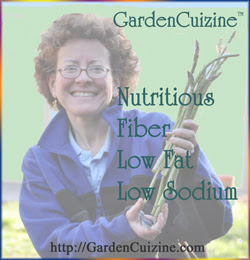 Photo Credits: Haddock, Melanogrammus aeglefinus. Drawing by H. L. Todd, from: No. 10440, U.S. National Museum, collected at Eastport, Me., 1872, by U.S. Fish Commission, Public domain image, Wikipedia.
Photo Credits: Haddock, Melanogrammus aeglefinus. Drawing by H. L. Todd, from: No. 10440, U.S. National Museum, collected at Eastport, Me., 1872, by U.S. Fish Commission, Public domain image, Wikipedia.  A nutritious and balanced dinner entree includes a protein, starch or whole grain and a generous serving of vegetables. For this Haddock dinner (recipe in separate post), the protein was fish. Out of the many healthy cooking options -- baking, broiling, poaching or grilling -- we decided on baking the haddock. For the starch or grain, we looked over what we had in the pantry (potatoes, pasta, millet, whole wheat cous cous, quinoa, wild rice or brown rice) and decided on millet pilaf with steamed broccoli as the vegetable.
A nutritious and balanced dinner entree includes a protein, starch or whole grain and a generous serving of vegetables. For this Haddock dinner (recipe in separate post), the protein was fish. Out of the many healthy cooking options -- baking, broiling, poaching or grilling -- we decided on baking the haddock. For the starch or grain, we looked over what we had in the pantry (potatoes, pasta, millet, whole wheat cous cous, quinoa, wild rice or brown rice) and decided on millet pilaf with steamed broccoli as the vegetable. Haddock is a good white fish to try if you like varying your fish menus. Variety is important in eating right. The benefits of varying your protein choices are that you get a balance of nutrients, minimize mercury exposure and increase your consumption of Omega-3 fatty acids. Some fish, like salmon, trout or herring have higher levels of Omega-3's and fish in general, when compared to meats, is very low in saturated fat.
The American Heart Association recommends no more than 6 ounces of cooked fish per day, and at least 2 servings of fish each week. Portion control is important in eating right, not just to watch excess calories, but because meat and fish proteins can be high in cholesterol or environmental contaminants. For example, shark, swordfish, king mackerel and tilefish are high in mercury. Haddock is not high in mercury, but is high in cholesterol like many fish (proteins). Flounder, tilapia and farmed salmon also have high cholesterol with a combined average, for a 5oz fish serving, of 89 mg (30%DV) - when calculated for cooked fish using a dry heat method, such as baking or grilling.
The good news is most all fish and seafood have some content of beneficial Omega-3 fatty acids, which have been shown in epidemiological and clinical trials to reduce cardiovascular disease. Haddock is a firm fleshed white fish, mild in flavor and very low in total Fat. A 5oz serving is an excellent source of Protein, Niacin, Vitamin B6, Vitamin B-12, Phosphorus, Selenium and Magnesium. A 5oz portion of Haddock is also a very good source of Potassium and Magnesium.
%DV = Percent Daily Value based on a 2,000 calorie daily diet
Copyright (c) 2009 Wind. All rights reserved.




























No comments:
Post a Comment